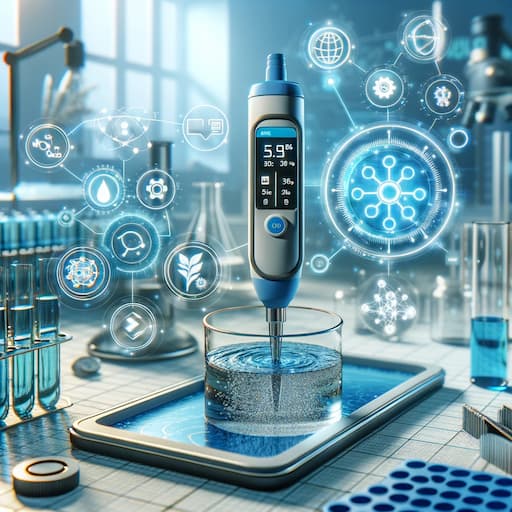Ion selective electrodes (ISEs): pioneers in water nutrient analysis
Understanding ion selective electrodes (ISE)
Ion selective electrodes (ISE) are specialized sensors used in analytical chemistry, particularly in the measurement of ion concentrations in water.
These electrodes are sensitive to specific ions and provide a voltage that can be translated into ion concentration.
This method is known for its accuracy and specificity, making it a popular choice in environmental monitoring and water quality assessment. Learn more about ISE applications.
The principle behind ISE technology
ISEs operate according to the Nernst equation, which relates electrode potential to ion concentration.
Each ISE has a unique membrane that selectively allows specific ions to pass through.
This selectivity is crucial for accurate measurements in complex solutions such as ambient water samples, where multiple ions may be present. Discover the challenges of using ISE.
Advantages of using ISE for water nutrient measurement

They provide rapid on-site analysis, which is essential for timely decision making in environmental management.
Their high specificity reduces interference from other ions, ensuring accurate readings.
Their high specificity reduces interference from other ions, ensuring accurate readings. Understand the principles behind these advantages.
Applications of ion selective electrodes in various fields.
ISEs in water are widely used in fields ranging from environmental sciences to agriculture and industrial processes.
In environmental monitoring, they are used to track nutrient pollution in water bodies, aiding in the protection of aquatic ecosystems.
In agriculture, ESIs help manage soil nutrient levels, which directly affects crop yield and health.
Industrial applications include monitoring wastewater and process streams. Learn more about ISE technology.
Learn more about ISE technology.
Despite their advantages, ISEs present challenges.
Calibration and maintenance are crucial for accurate measurements.
The presence of interfering ions can sometimes cause erroneous readings, requiring careful sample preparation and analysis.
In addition, the lifetime of the electrode membrane and its sensitivity to temperature and pH changes are important considerations for reliable use. Explore the benefits of using ISE.
Related: Nitrate ions: an essential component of soil fertility andagriculturehttps://www.ntsensors.com/optimizing-wine-quality-with-advanced-potassium-analysis/




